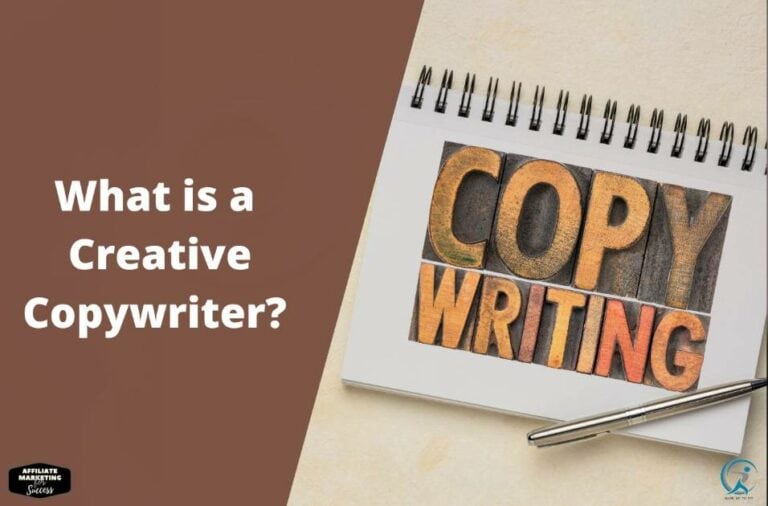Best Blog Post Structure for SEO & Engagement (2024 Guide)
Have you ever clicked on a blog post but left after just a few seconds? Maybe the content was overwhelming, or the structure made it hard to follow. As a blogger, you don’t want that happening to your readers! Structuring your blog post effectively is key to keeping readers engaged and ensuring they come back for more. 🚀
In this guide, we’ll explore the best structure for a blog post to improve readability and engagement. We will explore every aspect, from creating captivating headlines to effectively integrating visuals. Ready to take your blog content to the next level? Let’s dive in!
Why Structure Matters in Blog Posts 🏗️
A well-structured blog post isn’t just pleasing to the eye—it’s crucial for:
- Keeping your readers’ attention 👁️
- Enhancing user experience 🖱️
- Boosting SEO rankings 📈
But how exactly does structure impact these areas?
Keeping Readers Engaged 📚
Imagine opening a book with no chapters or paragraphs—just a massive block of text. Sounds daunting, right? Similarly, a blog post without a clear structure can overwhelm readers. By organizing your content logically, you make it easier for readers to follow along and stay interested.
If you’re new to blogging, check out our guide to starting an affiliate marketing blog for tips on setting up your blog for success.
Enhancing User Experience 🖥️
A good blog structure improves the overall user experience. When readers find your content easy to navigate, they’re more likely to stay longer, explore other blog posts, and even share your content on social media!
Boosting SEO Rankings 🚀
Search engines like Google favor well-structured content. Using proper headings, subheadings, and formatting signals that your post is reader-friendly. Plus, it helps search engines understand your content better, improving your rankings. Learn more about Google ranking factors and SEO strategy to boost your blog’s visibility.
Crafting Compelling Headlines and Subheadings 🎩
Your headline is the first thing readers see. It’s your chance to grab their attention! 🕶️
Tips for Writing an Eye-Catching Headline ✍️
- Include your primary keyword: This helps with search engine optimization (SEO).
- Keep it concise: Aim for 60 characters or less.
- Make it compelling: Use action words or ask a question.
Example: Instead of “Blog Post Structure,” try “The Ultimate Guide to Structuring Your Blog Posts for Maximum Readability and Engagement.”
For more on crafting headlines that convert, consider reading about writing high-ranking blog posts.
Using H Tags Effectively 🏷️
Headings (H1, H2, H3, etc.) aren’t just for style—they help organize your content.
- H1: Your main title. Use it once.
- H2: Main sections.
- H3: Subsections under H2.
Proper use of h tags improves readability and helps search engines crawl your site better. This is crucial for improving your content marketing strategy.
Writing an Engaging Introduction 🎉
The introduction sets the tone for your entire post. It’s your chance to hook the reader.
How to Hook Your Readers 🐟
- Start with a question: Engages curiosity.
- Use a startling fact or statistic: Grabs attention.
- Tell a quick story: Makes it relatable.
Example: “Have you ever clicked on a blog post but left after just a few seconds?”
Need help with writing? Learn how to avoid blogging mistakes marketers make to create compelling introductions every time.
Organizing Content with Clear Sections 🗂️
Breaking your content into sections makes it digestible.
Use Subheadings 📑
Subheadings guide readers through your post.
- Keep them descriptive: They should indicate what’s coming next.
- Include relevant keywords: This helps with SEO.
Short Paragraphs and Sentences 📝
- Keep paragraphs short: 2-3 sentences.
- Vary sentence length: For a better flow.
Short paragraphs and varied sentences make your content less intimidating and easier to read.
Bullet Points and Lists 🔢
Use bullet points or numbered lists to highlight key information.
- They break up text: Making it easier to scan.
- They emphasize important points: Helping readers remember.
For more on organizing your content, check out our article on winning content strategy.
Incorporating Visuals and Formatting Elements 🎨
Visuals can make your blog post more engaging.
Add Images with Alt Text 🖼️
Images support your content and make it more appealing.
- Use relevant images. They should add value.
- Include alt text: Helps with SEO and accessibility.
Use Bold and Italics to Highlight Key Ideas 🖋️
- Bold important concepts: Makes them stand out.
- Italicize terms or phrases: Adds emphasis.
Internal and External Links 🔗
Linking enhances the value of your post.
- Internal links: Link to your other blog posts.
- External links: Link to authoritative sources.
Pro Tip: Linking improves your site’s credibility and keeps readers on your site longer! For effective strategies, see our guide on internal linking.
Optimizing Content for Readability and SEO 🔍
Readability is crucial for keeping readers engaged.
Write at a Suitable Reading Level 📖
Aim for a 6th–8th grade reading level.
- Use simple language. Avoid jargon.
- Break down complex ideas: Make them easy to understand.
Incorporate Keywords Naturally 🗝️
- Primary keyword: Use in your title, first paragraph, and conclusion.
- LSI keywords: Sprinkle throughout the content.
But remember, don’t overdo it—keyword stuffing can hurt your SEO.
Meta Description 📝
Don’t forget about the meta description!
- Summarize your post: In 160 characters or less.
- Include your primary keyword: Helps with SEO.
For a deeper dive into SEO, read about mastering SEO best practices.
Crafting a Strong Conclusion 🎁
Your conclusion wraps up your post and leaves a lasting impression.
Summarize Main Points 📝
- Recap what you’ve covered: Reinforces learning.
- Keep it brief: A few sentences.
Provide Actionable Takeaways 🛠️
- Give next steps: What should readers do now?
- Encourage engagement: Ask a final question or invite comments.
Example: “Now that you know how to structure your blog post, why not give it a try on your next article?”
To ensure your conclusion drives action, consider learning about writing high-ranking blog posts.
Examples of Well-Structured Blog Posts 📚
Looking at examples can help solidify these concepts.
Analyzing a Successful Blog Post 🧐
Imagine a blog post titled “10 Easy Recipes for Busy Weeknights”:
- Clear headline with primary keyword: “Easy Recipes.”
- Engaging introduction: Addresses a common problem.
- Use of subheadings: Each recipe is its own section.
- Short paragraphs and bullet points: Ingredients and steps are easy to follow.
- Visuals: Photos of each dish.
- Conclusion: Invites readers to try the recipes and share their favorites.
What Makes It Great? 🌟
- User-friendly layout: Easy to navigate.
- Valuable content: Provides useful information.
- Engaging tone: Warm and approachable.
For more examples, see our successful blog post that drives engagement.
Putting It All Together 🧩
Creating a compelling blog post involves many elements, but when you put them together, you get great content that readers love!
Checklist for Your Next Blog Post ✅
Ready to Transform Your Blog Posts? 🚀
Structuring your blog posts effectively can seem like a lot of work, but it’s worth the effort. Not only will you keep your readers engaged, but you’ll also improve your search engine rankings.
So, grab this guide and start crafting your perfect blog post today! Who knows? Your next post might just become the ultimate guide that others look up to. 😉
Got any tips or experiences with blog post structure? Share them in the comments below! Let’s learn from each other. 🗣️
Summary
In this article, we’ve explored how to structure a blog post to enhance readability and engagement. By focusing on crafting compelling headlines, organizing content with clear sections, incorporating visuals, and optimizing for readability and SEO, you can create blog posts that captivate your readers and perform well in search engines.
Actionable Takeaways
- Start with a strong headline that includes your primary keyword.
- Organize your content using subheadings, short paragraphs, and bullet points.
- Use visuals and formatting to enhance readability.
- Optimize for SEO with natural keyword usage and proper meta descriptions.
- Engage your readers by asking questions and encouraging interaction.
Now it’s your turn! Apply these tips to your next blog post and watch your engagement soar. 🚀
Further Reading 📖
- Create SEO-Friendly Blog Posts to boost your organic traffic.
- Learn how to Write Evergreen Content that stands the test of time.
- Discover the Essential Tools for a Blogger to streamline your content creation process.
- Understand the Importance of SEO for Your Blog to increase visibility.
By implementing these strategies, you’ll not only create compelling content but also enhance your blog’s performance. Happy blogging! 🎉
References
- WordPress.com Guide offers 12 tips for structuring easy-to-read blog posts.
- Faster Capital Article – Provides insights on organizing content for better readability and engagement.
- AI Contentfy Guide – Comprehensive guide on creating well-structured and engaging blog content.
- Forge and Smith Tips – Offers 8 content structure tips to maximize engagement.
- HackMD Article – Detailed guide on structuring blog posts for maximum readability.
- LinkedIn Advice – Provides steps for structuring blog posts to maximize engagement.
- Highly Digital Guide: Offers tips on structuring blog posts for maximum engagement.
I’m Alexios Papaioannou, an experienced affiliate marketer and content creator. With a decade of expertise, I excel in crafting engaging blog posts to boost your brand. My love for running fuels my creativity. Let’s create exceptional content together!
Recommended Articles
- This connects to our discussion on WordPress Blogging Tips: 7 Proven Strategies for 2025 WordPress Blogging Tips: 7 Proven Strategies for 2025.
- To understand this better, consider reading about 27 Proven Blog Monetization Strategies for 2025 (Beginner Guide) 27 Proven Blog Monetization Strategies for 2025 (Beginner Guide).
- Building on these ideas, our Outsource Blogging Tasks: 11 Key Areas to Delegate in 2025 guide offers further perspectives Outsource Blogging Tasks: 11 Key Areas to Delegate in 2025.










